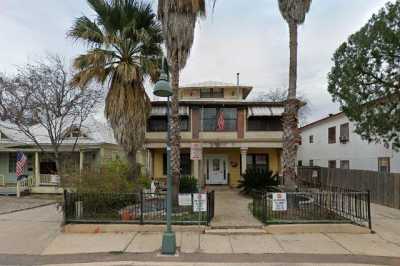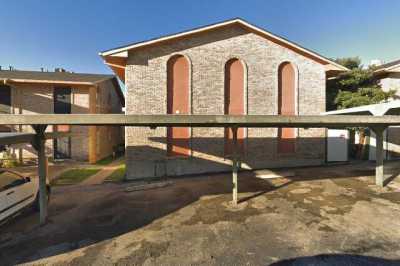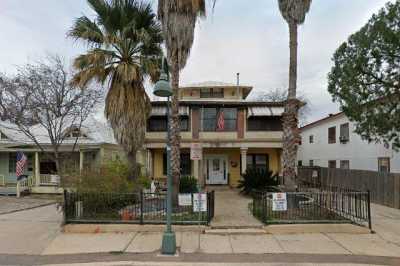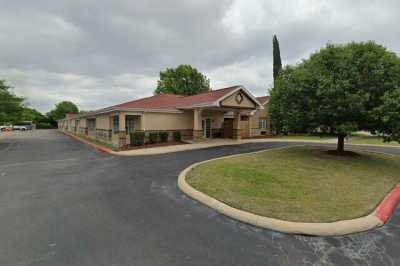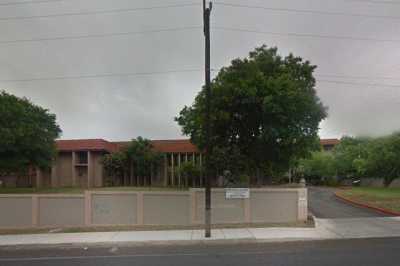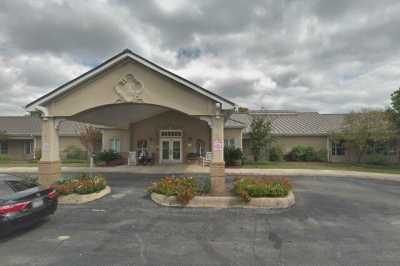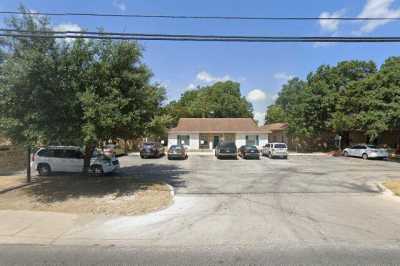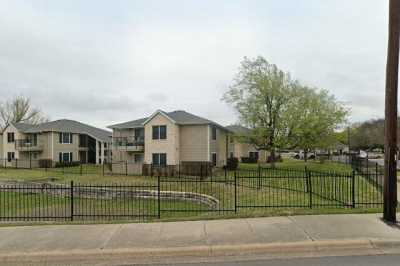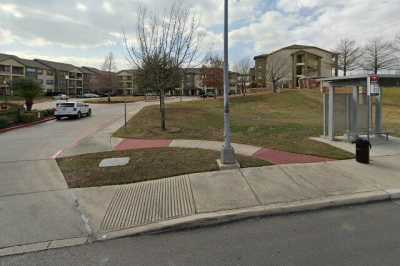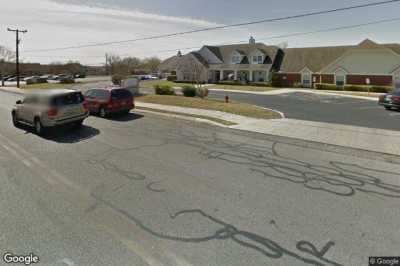
10 Best Independent Living Communities in San Antonio, TX
San Antonio, Texas, has risen to the top ranks of retirement destinations in the U.S. in recent years. Its year-round warm weather, walkable downtown, health care options, veteran opportunities, and relatively low cost of living naturally attract active and retired seniors. Seniors have a range of senior living options to choose from in San Antonio — including 10 independent living facilities that partner with A Place for Mom within a 10-mile radius of the city’s downtown alone.
In this guide to independent living for seniors in San Antonio, you’ll find a wealth of information on local costs, how seniors pay, local independent living features, senior demographics, and senior-specific resources and activities. With this hyperlocal data and information, we intend to help you find the most suitable independent living options in San Antonio.
San Antonio Independent Living Facilities | 2145 Reviews
I liked this community when I lived here. They offer some nice amenities including a beachfront infinity pool and a dry sauna. The staff were nice, however when I left for about a week someone vandalized my...
This is a great community. They have the great staff and the services are excellent. We like the community for being clean and a great environment, They have a chef that is outstanding on his meals that are...
Our free advisors can help
- Compare local facilities
- Determine care type
- Schedule tours
- Evaluate pricing
Our methodology
How we rank order the San Antonio community options above
We developed a proprietary recommendation system that orders San Antonio community options based on factors we know are important to seniors and their families:
- Proximity to your search location
- Availability of recent, high-quality reviews
- The amount of detailed community information available
Where we source our information
14,000+ communities
We collect proprietary data from our network of 14,000+ senior living communities in the U.S., with regular refreshes of data and information
350,000+ reviews
We have 387,000+ reviews from senior living residents and family members that provide first-hand accounts about senior living communities
- Costs of independent living in the San Antonio area
- What families are saying about independent living in San Antonio
- How people pay for independent living in San Antonio
- Understand Texas laws and regulations for independent living communities
- San Antonio: A city with a unique aging plan
- San Antonio independent living services and amenities
- Explore senior care with confidence
- Unfamiliar with San Antonio? Highlights for seniors
Costs of independent living in the San Antonio area
The median cost of rent at a partner independent living facility in San Antonio averages $3,000 per month, according to A Place for Mom’s 2022-2023 proprietary data. This cost is higher than the average rent for San Antonio apartments; however, the cost of rent typically includes senior-friendly amenities and activities. Costs may include on-site services and amenities like the following:
- A dining plan
- Housekeeping and laundry
- Transportation services
- Maintenance and landscaping
- Day trips and outings to local attractions
- Community-organized activities (fitness classes, interest clubs, game nights, etc.)
- On-site amenities (fitness centers, crafts centers, pools, libraries, movie theaters, etc.)
The following costs represent average baseline costs and give a good cost comparison locally, though these costs don’t account for any additional fees, like our proprietary costs above.
Average monthly cost of Independent Living in San Antonio, TX vs. nearby cities
Average monthly cost of Independent Living in San Antonio, TX vs. the state and national average
Average monthly cost of Independent Living in San Antonio vs. other types of senior living
Median monthly costs of Independent Living in San Antonio, TX by room type
What families are saying about independent living in San Antonio
Recent reviews for independent living in San Antonio
The William in San Antonio, TX
Timberhill Villa Retirement in San Antonio, TX
Pecan View Senior Care AL in San Antonio, TX
Reviews mention these favorite features of communities
How people pay for independent living in San Antonio
Seniors typically use a combination of private income resources to pay for independent living in San Antonio, Texas. And, seniors anticipating future care needs might also use public pay methods to cover home care or assisted living costs.
Below, you’ll find private pay tips, information on veterans benefits, Medicaid, Medicare, and public assistance resources that can help you cover independent living and senior care costs.
Private pay methods include all of your income resources — savings accounts, Social Security benefits, retirement pensions, and/or investment returns. These can all be used to cover costs at an independent senior living facility in San Antonio. Also note, Texas doesn’t have personal income tax, saving seniors from paying taxes on their Social Security benefits and/or retirement pensions.[02,03] Depending on your resources, you may also use a combination of the following payment methods:
San Antonio has one of the largest veteran populations in the U.S., and it’s the Texas city with the most veterans. The city is home to many military bases, naturally making it veteran-friendly. Veterans can find many job opportunities and resources within San Antonio, leading them to retire within the city.
U.S. Department of Veteran Affairs (or VA) benefits
Qualifying veterans can apply for VA pension benefits. They can then use those funds to cover their independent living costs. In addition to their VA pension, qualifying veterans may also apply for the Aid and Attendance benefit to receive additional funds. These funds can be used for anything that improves the veteran’s quality of life, like senior living.
San Antonio veteran support services
The approval process for VA benefits can be long and difficult, so it is a good idea to seek out benefit counseling and advocacy to file successfully. San Antonio and the state of Texas offer several veterans services and centers to assist veterans with the process:
- The Military and Veteran Affairs Department supports and assists San Antonio veterans through service recognition, support services, and more.
- The Disabled American Veterans (or DAV) organization partners with the North West San Antonio VA Clinic to provide support services to local veterans.
- The Bexar County Military and Veterans Services Center can help San Antonio veterans obtain their veterans benefits and file for claims.
- The Alamo Area Council of Governments (or AACOG) works with area nonprofits to provide support and resources to local veterans.
- The Texas Veterans Commission advocates for Texas veterans, their families, and their surviving spouses, with eight programs dedicated to helping veterans obtain benefits, file claims, and more.
To continually enhance the quality of life for veterans, San Antonio offers over 200 veteran resources and support services. With so many resources, it can become difficult to find the most suitable for you. That’s precisely why the Texas Veterans Network — San Antonio (also known as TVN), employs staff members who can evaluate your current situation and needs to recommend relevant support services. After their recommendations, they’ll make sure to follow up with veteran organizations to confirm solutions work for you.
Approximate number of veterans currently living in San Antonio, according to the U.S. Census Bureau
About 42% of San Antonio veterans are 65+, according to the U.S. Census Bureau.
Resources for San Antonio veterans
Military and Veteran Affairs Department home page
100 W. Houston St., Suite 1008
San Antonio, TX 78205
Phone: 210-207-3995
North West San Antonio VA Clinic
9939 State Highway 151
San Antonio, TX 78251
Phone: 210-706-7800
Hours: Monday through Friday, 6 a.m. – 5:30 p.m.
Military and Veterans Services Center (MVSC) home page
1422 E. Grayson St., 4th Floor
San Antonio, TX 78208
Phone: 210-335-6775
Email: vets@bexar.org
Hours: Monday through Friday, 8 a.m. – 12 p.m., 1 p.m. – 5 p.m.
Alamo Area Council on Governments (AACOG) veteran servicesPhone: 888-724-8387
Email: txveteransnetwork@aacog.com
Medicaid programs don’t cover independent living costs; however, they can help offset some health care costs. A majority of Texas seniors enrolled in Medicaid receive their coverage through STAR+PLUS — the state’s Medicaid-managed care program run by the Texas Health and Human Services Commission (or the HHSC). This program is specifically for adults 65+ and adults with disabilities and can be used to cover the cost of some long-term health care services.
If you or a senior loved one are planning for care needs that may arise in the future, it’s important that you learn about STAR+PLUS’ Home and Community Based Services waiver program. It can be used to cover the cost of some personal care services and medical supplies within a senior’s home or at their senior living facility.
The HHSC also has several programs that help seniors with Medicaid through their local Area Agency on Aging (also known as AAA) for seniors 60+, as well as other long-term care programs and disability programs. Below, you’ll find a Medicaid application and resources to help you find a local benefits office and understand your Medicaid benefits.
San Antonio resident Medicaid resources
Medicare is a federal health insurance program and anyone who is 65+ or disabled qualifies for it within the state of Texas. It cannot be used to cover rent or living costs within an independent living facility, but it can help cover many medical services — hospital stays, hospice care, certain doctors’ services, outpatient care, medical supplies, and preventive services.
Seniors who are eligible for Medicare in San Antonio can receive assistance with their Medicare benefits, legal advice, and referrals by utilizing the resources listed below. Legal attorneys or advisors may direct financially eligible seniors to the Texas Medicare Savings Program, which aids seniors with their Medicare premiums, deductibles, coinsurance, and/or copayments.
For assistance with your eligible benefits and for advice on local senior living options, contact your local long-term care (LTC) ombudsman. They’ll help you understand your payment options and navigate your senior living options. The Alamo Area Council of Governments (or AACOG) also helps San Antonio seniors access the long-term care they need. It provides benefits counseling, care coordination, caregiver support, and more to aging San Antonio residents. Find applications, local offices, and more below.
San Antonio resident Medicare resources
Health Information, Counseling, and Advocacy Program (HICAP)
Phone: 1-800-252-9240
The Legal Hotline for TexansPhone: 1-800-622-2520, ext. 3
Hours of Operation: Monday through Friday, 8:30 a.m. – 5 p.m.
Long-term care ombudsman
Cindy Boyum, Managing Local Ombudsman at AAA of Bexar County2700 NE. Loop 410, Suite 101
San Antonio, TX 78217
Phone: 210-362-5236
Email: cboyum@aacog.com
Aging Services for Bexar County and Alamo Area
Phone: 210-477-3275
Email: info@askasc.org
Phone: 2-1-1
Because Medicaid and Medicare don’t cover independent living costs, some seniors turn to housing assistance programs and/or Social Security benefits to offset living costs at an independent living facility. Learn more about both below.
Housing assistance programs
Some independent living communities accept housing vouchers from the U.S. Department of Housing and Urban Development (or HUD). The Housing Choice Voucher (or HCV), formerly known as Section 8, is the most commonly used housing assistance program. San Antonio also offers its own Housing Assistance Program (or HAP) for renters below certain income limits. Low-income seniors or individuals with disabilities may qualify for the HCV or HAP programs and receive rent assistance in a San Antonio independent living community. Be sure to inquire about these housing assistance programs when looking for a prospective community as owners must first agree to rent under the HUD programs.
Social Security benefits
Seniors can also use their Social Security benefits to defray independent living expenses. There are several types of benefits available through the Social Security Administration; however, the ones available to you will depend on your work history and current situation. Here’s a brief overview of all the different Social Security benefits:
- Social Security Retirement (or SSR) benefit: SSR is a monthly check received during retirement after an individual has retired or reduced their working hours. Eligibility is dependent on the senior’s prior work.
- Social Security Disability Insurance (or SSDI): The SSDI program pays monthly benefits to workers with qualifying disabilities who have worked long enough and recently enough. Social Security defines a disabled individual as someone who cannot work due to a severe lasting medical condition that prevents them from doing work they did in the past.[05] When an individual turns 65, SSDI payments usually become SSR payments. If a senior wishes to continue working and receiving SSDI payments, they might be able to; however, it’s strongly recommended that they reach out to a disability attorney for advice.
- Supplemental Security Income (or SSI): The SSI program provides monthly payments to qualifying individuals with a disability or seniors 65+ regardless of work history. These payments may be received in addition to SSR and SSDI payments. Eligibility requirements include having limited income and resources.
- Social Security survivors benefits: The survivors benefits plan pays a monthly benefit to provide financial support for widows, widowers, and dependents of a deceased worker. This monthly payment is known as an annuity and is meant to ensure a reliable income stream for the survivors of a deceased family member who worked and paid Social Security taxes.
If you’d like more information on public assistance, you’ll find more resources for housing assistance and Social Security below.
San Antonio resident public assistance resources
Understand Texas laws and regulations for independent living communities
San Antonio independent living facilities are not regulated by a state agency. They’re still required to comply with Texas’ general housing and apartment standards, though, such as the Texas Property Code and Fair Housing Act. But, if an independent living facility shares a campus or building with an assisted living facility (or ALF), they must comply with assisted living licensing and regulation requirements set forth by Texas Health and Human Services, also known as HHS.
Regulations for independent living facilities on an ALF campus
Independent living facilities that share a campus with an assisted living facility are required to regulate the following in order to pass inspections and stay licensed:
- Adequate staffing
- Employee background checks
- Management of the facility
- Construction of the facility
- Implementation of safety and emergency features
- Protection from hazardous areas
- Documented reports of fire drills, system checks, etc.[06]
Tenants’ rights in Texas
Stand-alone independent living facilities don’t have strict inspection requirements, but they are required to comply with the state’s housing and apartment regulations for landlords and tenants. You’ll find it useful to learn about tenant rights, as it’ll help you find a safe and satisfactory living environment for you as you rent. Here’s a brief summary of tenants’ rights in Texas:
- Residents have the right to ask their landlord to repair problems that risks their health and safety, and landlords must make a diligent effort to repair the problems at hand.
- Residents may terminate their lease if a problem that affects their health hasn’t been resolved after two notices to the landlord and within a reasonable timeframe — usually seven days.
- Residents may hire an external contractor to fix the problems at hand, if their landlord fails to resolve issues that affect their health after the multiple notices within a reasonable timeframe. Residents can then submit the expenses to the landlord to deduct from their rent.[07]
Before you move forward with terminating a lease or hiring an external contractor, it’s strongly recommended that you reach out to an attorney or a tenants association. Consulting a housing expert will help ensure that you don’t breach any lease agreements, and it’ll ultimately help you get the end result you desire. It’s also recommended for tenants to provide written notices to their landlord and to keep a copy of each notice as proof.[07]
For more information on your rights as a tenant in an independent living facility, read the Texas Tenants’ Rights Handbook.
Accommodations and modifications for disabled seniors
In Texas, federal nondiscrimination laws — such as the Fair Housing Act, Section 504, and Americans with Disabilities Act (or ADA) — protect tenants from being discriminated against due to their disability. This prohibits independent living facilities from refusing housing due to an individual’s disability. Furthermore, these laws require housing providers to provide disabled individuals with reasonable accommodations and modifications in housing, programs, and activities.
If you’re a senior with a disability, you have the right to request reasonable accommodations and modifications within the independent living facility. Reasonable accommodations are defined as changes to facility policies and could include the following:
- Allowing a service animal to live with a resident even when there’s a no-pets policy in place
- Assigning a parking spot for easy entry to the resident’s building
- Changing the due date of rent to reflect a resident’s disability income payment dates[08]
Modifications are structural changes to common areas and individual units and could include the following:
- Installing a specialized smoke detector for a resident with a hearing impairment
- Adding a wheelchair ramp to enable a disabled resident to easily access shared spaces and participate in resident activities
- Installing grab bars or widening doorways in a resident’s unit to accommodate wheelchair users[08]
These nondiscrimination laws apply to all independent living facilities in San Antonio. Independent living facility owners are required to pay for such modifications unless providing them would pose an undue financial or administrative burden. For more information, see this detailed infographic on reasonable accommodations and modifications.
COVID-19 regulations for San Antonio independent living communities
Neither San Antonio nor Texas have any specific COVID-19 regulations in place for independent living facilities. However, independent living facilities with an assisted living facility (or ALF) on-site, must comply with ALF standards set forth by the Texas Health and Human Services Commission (or the HHSC). Assisted living facilities are required to develop their own infection prevention and control measures regarding masks, physical distancing, and additional protocols for personal protective equipment (PPE) during an active infection or outbreak.[09]
San Antonio: A city with a unique aging plan
San Antonio aspires to support its increasing aging population through the implementation of a Senior Services Strategic Plan. It was created to evolve senior support services throughout the city, including plans to enhance programming in city senior centers, expand medical services, and generally support local seniors as they age. Likewise, you’ll see that the San Antonio independent senior living scene tries to support aging seniors by expanding services, amenities, and floor plan options to keep up with unique needs.
Here’s an overview of some of the most unique features of San Antonio independent living facilities:
A convenient and safe space for aging in place
Some of the most popular independent living communities in San Antonio promote aging in place by offering tiered levels of care. Most of our partnering communities typically have an assisted living unit on-site, while some also offer memory care, respite care, and/or skilled nursing wings. The multiple care options enable seniors to age gracefully and with peace of mind, as increased care needs won’t warrant a move.
These communities also aim to minimize daily stressors for residents by providing convenient services and security. In most of our partnering communities, residents don’t have to worry about cleaning, cooking, or driving, unless it’s something they want to do. Staff members offer housekeeping and laundry services, daily meals, and complimentary transportation. Furthermore, some communities aim to ensure resident safety by employing 24-hour staff, using robust security systems, and providing emergency call systems throughout the community.
A lively, engaging atmosphere
San Antonio independent living facilities pride themselves in offering a range of activities and amenities that actively engage residents of all interests. Some of the most common amenities include the following:
- Beauty salon and barber shop
- Arts and crafts center
- Fitness center
- Game room
- Swimming pool
- Courtyard
- Library
- Movie theater
- Concierge services
As far as activities go, the possibilities are endless. Many San Antonio communities cater to residents’ interests and adjust resident programming accordingly. Communities often host the following activities and events:
- Game nights
- Live musical events
- Holiday and birthday parties
- Fitness classes
- Art classes
- Interest club meetings
- Group outings
- Devotional services
A variety of floor plans
Resident comfort is one of the top priorities in all of our partner San Antonio independent living facilities. That’s precisely why communities offer multiple floor plans to help ensure their residents find a home suitable to their desires. From cozy studio units to spacious three-bedroom homes, residents will find something that checks all their boxes. Most units feature a kitchenette, a dining and living area, and at least one spacious closet. Additionally, all in-network communities are pet-friendly, enabling pet friends to come live with their beloved owners.
A few communities even offer a little more privacy and room with individual cottage layouts. While higher in price, these cottages typically have a full kitchen, an individual climate control, a garage, and private patios. Some even offer multiple walk-in closets, a den, or an atrium. Plus, residents don’t have to worry about landscaping as community staff will handle it.
San Antonio independent living services and amenities
Availability of select dietary accommodations in San Antonio independent living
Availability of select dining options in San Antonio independent living
Availability of select programs and activities in San Antonio independent living
Explore senior care with confidence
Know where to start.
Identify the right care for your loved one with our free assessment.

See what you can afford.
Understand cost and payment for long-term care based on your loved one's needs.

Find top facilities for you.
Free, personalized guidance from our Senior Living Advisors can help you narrow your search.

Tour your favorite facilities.
Our free touring checklist can help you choose the right community.
Unfamiliar with San Antonio? Highlights for seniors
Number of seniors over the age of 65 currently living in San Antonio, according to the U.S. Census Bureau
Percentage of San Antonio seniors 65+ that are retired from the workforce, according to the U.S. Census Bureau
Median annual retirement income for San Antonio seniors 65+, according to the U.S. Census Bureau
Health care for seniors in San Antonio
San Antonio has a wealth of health care options for seniors and veterans. Here’s some information on the city’s top-rated medical care facilities:

Methodist Hospital — San Antonio
Methodist Hospital is No. 1 in San Antonio and No. 13 in Texas, according to U.S. News and World Report. It is high performing in 11 procedures and conditions, including diabetic care, kidney failure, and post-stroke care.

Baptist Medical Center
Baptist Medical Center is No. 2 in San Antonio. It’s high performing in nine procedures and conditions, including some cancer surgeries, heart failure, and diabetes.

Brooke Army Medical Center
Brooke Army Medical Center is the largest and most robust military health care organization in the U.S. It serves military service members, veterans, their families, and civilian emergency patients. It’s known for its exceptional, patient-centered care and for treating combat causalities and trauma.
Transportation for seniors in San Antonio
Seniors can utilize many means of transportation in San Antonio — drive their own car, use public transportation, and depending on the neighborhood, even walk or bike. Our partner independent living facilities in San Antonio also offer on-site transportation services to residents. This provides convenience and aims to minimize any safety risks for residents looking to get from place to place. In fact, 100% of our San Antonio partner independent living communities offer complimentary transportation. Depending on the community, rides may be limited to errands and appointments.
If a senior is more active and independent, or if you’re a family member looking to visit and take them around downtown, you may want to look into VIA Metropolitan Transit options, including buses, ride share, and paratransit services throughout the city. Seniors 62+ can ride for only a quarter Monday through Friday, 9 a.m. to 3 p.m., and receive free rides on Saturday and Sunday. Seniors must obtain a VIA Reduced Fare ID to receive their senior discounts.
These scores from WalkScore might also help you get a better feel for the San Antonio downtown area. Keep in mind that this data reflects downtown, not the entire city. Each score is out of 100 and is based on downtown’s public density, transportation system, walking and biking routes, and other city information:[13]

Walk Score

Transit Score

Bike Score

Diverse activities for seniors in San Antonio
San Antonio is a hub for unique senior activities. Seniors can find something for all of their interests — explore niche museums and expansive parks in the city or travel two hours to stroll sunny beaches and enchanting woodlands. In San Antonio, seniors and loved ones will find themselves surrounded by a world of activities and various landscapes. Here are some activities favored by seniors in San Antonio:
These attractions are great for history buffs:
- The Alamo: This historic fortress compound is famous for the 1836 Battle of the Alamo and is now open to tour. Visitors spend time wandering the historic buildings, viewing priceless artifacts, and exploring memorials set against beautiful gardens full of solemn old-growth oak trees.
- San Fernando Cathedral: Founded in 1731, this captivating cathedral attracts thousands of visitors every year. It’s known to be the oldest standing church in Texas. Seniors particularly enjoy attending weekly Mass and learning about its rich history.
Arts and culture lovers will enjoy these attractions:
- San Antonio Museum of Art: This museum is known for displaying unique artworks from around the world, some dating back almost 5,000 years. Seniors will find themselves entranced by sculptures, paintings, and rotating exhibits.
- The Majestic and Empire Theatres: As San Antonio’s largest and oldest atmospheric theatres, the Majestic and Empire host a variety of events throughout the year — seniors can attend their favorite Broadway musicals, comedy shows, concerts, symphonies, and more.
- Witte Museum: This museum is a Smithsonian affiliate and is known as San Antonio’s most visited museum. Combining nature, science, and culture, seniors find themselves learning about historic artifacts, observing Texan wildlife, and exploring immersive exhibits.
Nature enthusiasts will feel right at home in these attractions:
- Parks: San Antonio is home to numerous parks where locals enjoy live musical performances, picnics, leisurely strolls, or simply basking in the warm Texas sun. One of the city’s most popular parks is Brackenridge Park due to its many offerings — the San Antonio Zoo, an 18-hole golf course, gardens, historic sites, and musical events.
- Texas Hill Country: This Texas region is about an hour and a half from San Antonio, and it’s filled with picturesque ranches and natural wonders. Active seniors can take a hike in the scenic hills, a dip in one of the swimming holes, or a walking tour of the magnificent caverns. Visitors looking to relax can sip on some wine at one of the popular Texas Hill Country wineries or birdwatch against majestic views on a river cruise.
Keep in mind that some independent living facilities will plan day trips and outings to similar attractions. Also, remember to ask for senior discounts or accommodations for disabilities when planning visits.
Frequently Asked Questions
Serenity Oaks Assisted Living and Memory Care, Gemstone at Bulverde and The Waterford at Thousand Oaks are the top-rated Independent Living facilities near San Antonio, TX. These Independent Living facilities received the highest rankings based on verified family reviews. See full list of communities.
The average cost of Independent Living in San Antonio is $4,017 per month. This cost may vary based on location, amenities, floorplan, level of care and other factors.
References
A Place for Mom. (2023). A Place for Mom proprietary data.
TurboTax. (2022, December 1). States with the lowest taxes and the highest taxes.
Fritts, J. (2020, August 9). Does your state tax social security benefits? Tax Foundation.
United States Census Bureau. (2021). Veteran status (S2101) [Data Set]. American Community Survey.
Social Security Administration. (2019). The faces and facts of disability: Facts.
Assisted Living Facility Licensing Act, Health Facilities § 247.001 (2021).
Texas Young Lawyers Association & State Bar of Texas. (2019). Tenants’ Rights Handbook.
U.S. Department of Housing and Urban Development. (2022). Reasonable accommodations and modifications.
Texas Health and Human Services. (2023, January 11). HHSC retires ALF COVID-19 response plan and COVID-19 FAQs.
United States Census Bureau. (2021). Population 65 years and over in the United States (S0103) [Data Set]. American Community Survey.
WalkScore. (2023). Downtown San Antonio.

More questions?
Ask an A Place for Mom local advisor at no cost.
- Schertz, Texas
- Bulverde, Texas
- Hill Country Village, Texas
- Helotes, Texas
- Castroville, Texas
- Cibolo, Texas
- Universal City, Texas
- Alamo Heights, Texas
- Fair Oaks Ranch, Texas
- Garden Ridge, Texas
- Live Oak, Texas
- Converse, Texas
- Lytle, Texas
- Windcrest, Texas
- Somerset, Texas
- Von Ormy, Texas
- Adkins, Texas
- Atascosa, Texas
- Castle Hills, Texas
- Shavano Park, Texas

